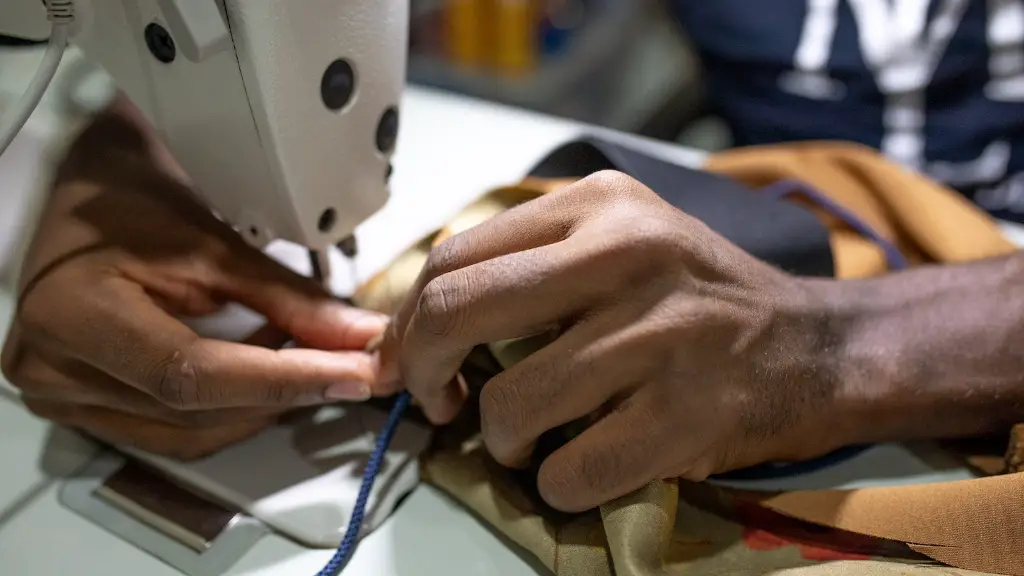What Needle Do You Use?
When talking about sewing machine needles, we can break them down into four categories: Universal, Jersey, Stretch, and Hemstitch. Each needle type has a size, diameter, and specific purpose. Understanding the differences between needles and when to use each one is essential for successful sewing.
Universal needles are the most commonly used and the most compatible with all types of fabrics, from lightweight silk to medium-weight knit fabrics. These needles are a good option for most sewing projects. Jersey needles, on the other hand, are designed for knit fabric. Being made with a slightly rounded point, this type of needle cuts through the loops that form when two pieces of knit fabric are sewn together.
Stretch needles are designed for active wear, dancewear, and swimwear fabrics. These fabrics are made from Spandex, Lycra, and other stretchy fabrics. The needle has a round shaft and a deeply cut scarf that helps prevent fabric damage. A scarf is a shallow groove right at the top of the needle that helps guide the bobbin thread up when sewing. It also helps prevent skipped stitches when using stretch fabrics.
The Hemstitch needle is mainly used for decorative stitching. It has a long, sharp point and an extra-large eye to accommodate special embroidery threads and decorative trims. Keep in mind, this needle should only be used on woven fabrics – not knit fabrics.
When Should You Change Your Needle?
It’s recommended that you change your needle on a regular basis. A good rule of thumb is to check your sewing machine needle after every 8 hours of sewing or any time you make a major change to your fabric. This could include switching from a lightweight fabric to a heavier one or going from a smooth knit to a coarse one. If you are getting skipped stitches, it could be a sign that you need to change your needle. Changing your needle regularly ensures that you get the best sewing results.
Needles are also affected by magnetism, so make sure to keep your needle away from any magnetic fields. If you happen to sew near a speaker or other magnetized appliance, occasionally check your needle for rust or notches. If you notice any flaws or damage, replace the needle immediately.
Types of Needle Shanks
Needles come in two different shank types- flat and round. Machines built in the US have a flat shank, while machines built in Europe have a round shank. In either case, make sure to install the needle properly with the flat side facing away from you. Taking the time to properly insert your needle can save you time in the long run by preventing needle breakage and skipped stitches.
Do Not Reuse Needles
Many people make the mistake of thinking that sewing machine needles can be reused. This is not true! While you may be able to get away with reusing a needle once or twice, it’s not recommended – needles are very sharp and are designed to be a disposable item. If you attempt to reuse a needle, you can risk damaging your machine or your fabric. Needles may become brittle over time and cause skipped stitches, fabric puckering, or worse—broken needles.
Testing Your Needle
If you are unsure if your needle is still good or not, no problem! There is a simple test you can do. To start, select a scrap piece of the same fabric that you plan to sew and insert your needle. Next, lower the presser foot and carefully push your fabric forward until it pierces the needle. You should feel a very slight resistance when the needle pierces the fabric. If the needle easily passes through without any resistance, it is time to replace it.
Choosing The Right Needle
Making sure you have the right needle for your project is integral to successful sewing. If you are unsure of which type of needle to use, it’s best to consult your sewing machine’s manual.
When you are ready to purchase your needles, make sure to get high-quality needles. Cheaper needles may seem tempting, but they often contain the wrong sized eyeholes or have points that are not sharp enough. High-quality needles use special alloys which help them last longer.
Cleaning and Storage
It’s important to keep your needles clean and sharp. Start by purging your machine of any lint or dust that may have built up by using a lint brush and a can of compressed air. If you don’t have a lint brush, an old toothbrush should do the trick.
When you are not using your needles, make sure to store them in a cool, dry, and dark place. Stick with the original needle packaging to avoid any scratches or other damage.
Conclusion
Sewing machine needles are a critical component of successful sewing. Knowing when to change your needle and understanding the different types of needles available to you can help ensure you get the best results from your sewing. Quality needles can help make your life easier when it comes to sewing, so make sure you choose the right needle for the job and take care of it properly.


